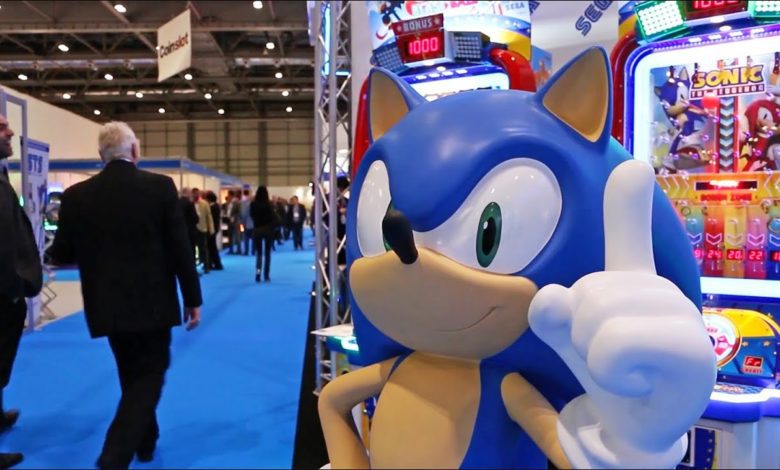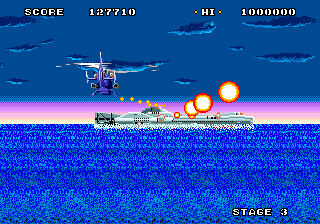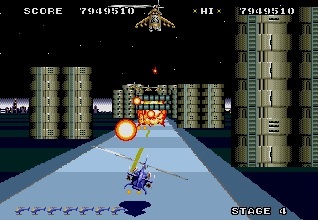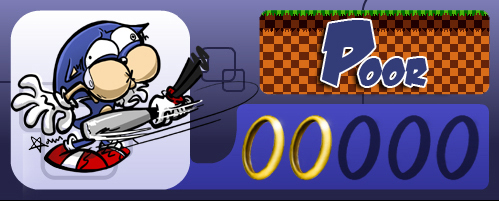
Review Overview
POOR
POOR
Super Thunder Blade is still playable, to say the least, and it can still be enjoyed to some degree and very much appreciated if approached with the right perspective.
One of these things is not like the others, one of these things just doesn’t belong.
Space Harrier – After Burner – Hang On – Out Run – Thunder Blade
Can you tell which thing is not like the others by the time I finish my song? (Pretend I’m singing a damn song)
Too late. Song’s over. What do you think?
If you guessed Thunder Blade, you’re correct. Why? Well, they are all SEGA arcade games from the ’80s right? Hm, and they all used the “super-scaling” technology to simulate a 3D effect… Okay, yes, Yu Suzuki wasn’t really directly involved in Thunder Blade, but that’s not what I’m going for.
What I’m going for is that while the four former series have all been celebrated by sequels and re-releases with high production values, Thunder Blade, and its direct to console follow-up, Super Thunder Blade, have been largely forgotten.
Super Thunder Blade may be a pretty big reason why.

Blah, blah, blah. Shoot. Shoot. Shoot.
Everyone comes to the table of an old, arcade-style rail shooter looking for a deep, engaging plot, right? So I’m going to let the master wordsmiths at SEGA tell it like nobody else can (meaning I’m pretty much pulling directly from the game’s manual).
“Weathered and damaged, Thunder Blade returned victorious from its last mission against the renegade troops. But, this was not to be its last flight.” (SEGA Nerds translation: this is a sequel)

“Reorganized with mega amounts of devastating military electronics and weapons (“military electronics” is not a typo), the renegade troops have once again focused their sights on dominating the free world. From a secret power base in the East, they unleash their deadly troops who will take land, sea and air powerfully armed.” (SEGA Nerds translation: It’s pretty much the Russians)
“But so are you. From the cockpit of this remodified bird, you’ve got a state-of-the-art defense system at your… (yap, yap)… shoot straight, be brave and just maybe you’ll get your wings out of this mission. The free world as we know it, depends upon you.” (SEGA Nerds translation: this particular video game is a shooting video game)”
Now that we all know just what’s at stake here, let’s move on to the tofu and ‘taters that make up this manly, gunly game!
Hooah Tech Specs and Whatever…

A little something for all you gun dorks military aficionados out there. Your new Super Thunder Blade can travel at speeds up to 523 kph (that’s roughly 325 mph for all us God-fearing ‘Muricans), and it’s equipped with a limitless supply of air-to-surface AATM missiles and a 20 mm Gatling Gun which fires up to 4,800 shots per minute! Wow, so, none of that matters in the game, but it’s nice to kill some trees and include that information in the manual, now ain’t it?
You and you alone will fly through four meaty stages ranging from an occupied city, desert caves, and over open ocean, all the while dodging obstacles and shooting down your legion of an adversary. The stages themselves are mostly rearranged stages from the arcade game, so if not for the thin plot separating it from the original Thunder Blade, Super Thunder Blade could almost be considered Thunder Blade 1.5.

Each of these stages has a unique look to them and range from looking quite interesting for 1989 (stages 3 & 4) to an overambitious near-eyesore (stage 2). I’m especially fond of the color palette used in stage 3 simulating the sunset over the ocean. Combined with all of the war and death, and its quite romantic. As far as audio is concerned, the sound effects and music in the game are adequate, though when compared to other SEGA fare at the time, the tunes fall short of their typically ear-catching qualities.

The super-scaling 3D effect of the arcade game missing due to the Genesis lacking sprite scaling capabilities. Instead, the effect is approximated by generating sprites of increasingly larger size, which is used to varying degrees of success in Super Thunder Blade. The obstacles such as the surrounding buildings are therefore just flat façades, and the arcade’s 3D effect in the overhead sections was dropped altogether. It certainly never comes close to reaching the visual heights of its arcade prequel, but for a Genesis launch title, it blew away anything Nintendon’t didn’t do… no, wait… Yeah, never mind. That works.
Each level has two distinct sections: the 3D behind the back perspective followed by a 2D overhead perspective. Seeing as how Super Thunder Blade was not made to suck in quarters like its arcade counterpart, the developing team wisely deviated from the pattern of the original and put the 3D segments at the beginning of each stage. If you’re looking to sell a new game system, you’d want that killer mode right up front the second you hit start, don’t you think?

During the 3D segments, your chopper doesn’t do a whole lot of animating, and neither do the enemies. Everything just sort of enlarges as it flies at your face (sounds like a dream I had last night- a very different kind of dream). You fire both your Gatling Gun and rockets simultaneously with a single button press, which frees up your thought processes as you dodge and weave obstacles. It’s a welcome feature for anyone who has nearly sprained their thumbs constantly rocking them over the rocket button in an After Burner game. These sections each also have a relatively impressive boss fight smack dab in the middle, including a massive tank, submarine, and mechs (Huh. My spell check is telling me that “mech” isn’t a word- that’s dumb. It’s totally a word).
Another keen feature of the game that set it apart from other 3D rail shooters at the time is the ability to stop and hover in place. This allows you to progress a bit more meticulously if you are having trouble navigating certain areas or if you want to try and clear out a group of enemies before moving forward. The trade off is that your final score at the end of the stage is dependent on your time in completing it, but if a high score doesn’t matter to you, then hover away!

The overhead sections play a bit like like a vertical shooter, although your chopper can only slide from left to right at the bottom of the screen and your fire is directed down toward the surface while automatically scrolling upward and onward. The hover button also changes to a “move slowly backwards” button, which is pretty worthless until you are forced to use it in the very final battle of the game.
The goal in the overhead areas is largely to survive a deluge of attacks from the surface, and if you just keep moving, doing just that is a pretty easy task. So easy in fact, that the first few times I played through them I thought they were bonus levels. It made sense because your HUD (head-up display, didn’t want to assume) disappears altogether and you therefore have no clue how many lives you have left in reserve. But you can, in fact, die enough times to fail in these areas, so don’t be too reckless.
“Go! Get to da Chop- Chop- Choppah!”
So where does Super Thunder Blade fail? Right out of the hangar you will notice the choppiness of the 3D effect. It may have been the home console standard to beat in 1989, and it was quite a bit better than the Master System version of the original, but it’s a rough ride 25 years later. It’s not terribly disorienting at all times, though. Cruising through stage 1, you’ll find that the effect is quaint, but it doesn’t really affect your ability to play the game.

Then you will reach stage 2, the desert caves. The ugly, frustrating desert caves. This is where the design of the game starts to fall apart. Throughout the stage, you will pass through a pair of archways leading into and out of these giant caves. Even when I stopped my helicopter and carefully lined it up with the center of the entrance, the scaling is so wonky that I still snagged the edge of the cave as I crossed over and crashed to my death. The only way to ensure that you avoid this death trap is to line yourself up and crawl through by gently pressing and releasing the hover button, every single time.

Once inside the cave, it just gets worse. Visually, it is a flat, dark space with columns spread throughout for you to dodge and, of course, tanks and other helicopters for you to blow up. Here is where I noticed a very fundamental flaw in the game. Let’s say you stop and hover on the screen and try to take out some tanks camping out behind a couple of columns. Well, your weapons neither destroy the columns nor do they penetrate through them. That wouldn’t be too much of an issue except that your enemies can shoot through the obstacles. So don’t try taking cover behind a stalagmite or a column, because a shell is likely to go right through and deliver with it a fiery death. This also means that you can be flying through a stage, and not be able to see an enemy at all if they are behind an obstacle, and just as you approach the obstacle to pass by, you are suddenly shot down by a rocket or shell that you also couldn’t see until it was far too late. This leads to a lot of cheap deaths, especially given the slightly laggy controls of your helicopter.

It also becomes painfully obvious in stage 2 that it is very difficult to know exactly where your right and left limits actually are. In both stages 1 and 4, t here are usually buildings lining both sides of the field of play so you generally know where to move.In stage 2, especially inside the cave where the backgrounds are so non-descript, it’s difficult to know whether you can go around a particular pillar on the outside or if you will be limited by an invisible wall and crash. Requiem pro tip! I found that you can always pass on the outside, but this seriously limits your field of fire and I was frequently met with one of my afore-mentioned sudden deaths by hidden tank shell, so that strategy doesn’t always work.

After much to-do, I eventually escaped the desert caves and made it to stage 3, the open ocean, where I only crashed once. In a game with only four stages, why on earth would the second one also be the second hardest when the third one is so damn easy? Sure, it was nice to get a break before the final level, but I still feel bad for 8-year old little Billy, a hypothetical SEGA-fan who bought Super Thunder Blade day one with his Genesis back in 1989. He may very realistically never have seen anything past that damn desert stage. That’s $50 he’d never get back (over $95 when adjusted for inflation). A simple fix like the ability to choose your starting stage (similar to Space Harrier II) might have helped a bit. At least little Billy would have seen more than just two of the game’s environments (I’m guessing he played quite a bit of Altered Beast).

Once you complete your vacation cruise through stage 3 and arrive at the final stage (which only sorta kinda resembles a refinery), another odd design flaw rears its ugly head. In addition to ill-defined right and left limits, you now have to mind your limit at the bottom of the screen. Why? Because you land unexpectedly, essentially freezing in place, if you even tap the ground below. Needless to say this means many more cheap deaths as you try to fly below some very low-hanging obstacles in stage 4. If the player is already in full control of when the helicopter stops with the press of the hover button, then why include the mechanic of landing, which more often than not, is done completely by accident? If I had a nickel for every time I died as a result of an unexpected landing while trying to pass under an obstacle and dodge a phantom rocket at the same time, well, I wouldn’t be wasting my time writing this bloated retro review!

Closing
It’s more than past time to wrap up this review before it becomes longer than the actual game (if this took you more than 20 minutes to read, it is longer). As a launch title, I’m sure that Super Thunder Blade did its job. It made good on SEGA’s promise to deliver an arcade-like experience at home, and it was quite a showpiece when put up against comparable NES rail shooters like 3D World Runner or the Tengen port of After Burner. Even when put up against Space Harrier II, its peer launch title, Super Thunder Blade is a measurably weaker game.

Super Thunder Blade is still playable, to say the least, and it can still be enjoyed to some degree and very much appreciated if approached with the right perspective. But even for this SEGA Nerd, it is very difficult to recommend that you track down a copy and spend your retro dollars on it. It is available on the Wii Virtual Console for 8 bucks, so the price of entry there isn’t too bad.
However, I do suggest that if you are interested in playing Super Thunder Blade for yourself, grab a copy of Sonic’s Ultimate Genesis Collection on PS3 or Xbox 360. It regularly goes for less than $20 on Amazon, and Super Thunder Blade is included along with tons of other, better Genesis titles.
It really is a shame that Super Thunder Blade and the Master System port of the original are so rough because their flaws seem to have tainted the retrospective appreciation of the arcade original, which is a much better game.
Here’s hoping that Thunder Blade in its original form will eventually emerge on a digital service like Steam or, even better, a full 3D Classics re-release on 3DS à la Galaxy Force II.

PROS:
+ Unique mechanics for a rail shooter
+ Some stages still look pretty good
+ Decent boss fights
+ Succeeded as a showpiece for its time
CONS:
– Design flaws cripple the experience
– 3D effect is choppy as all heck
– Cheap deaths
– The caves, I tell you! The caves!


